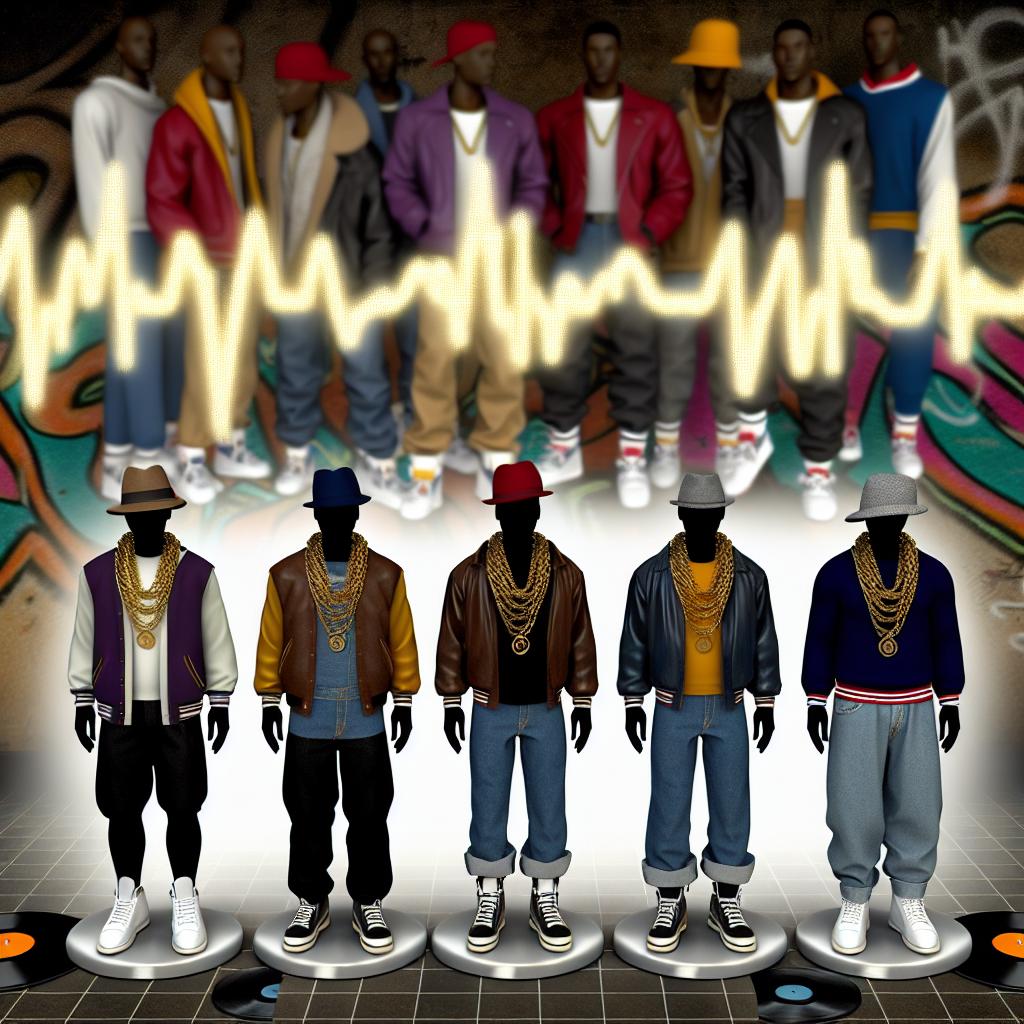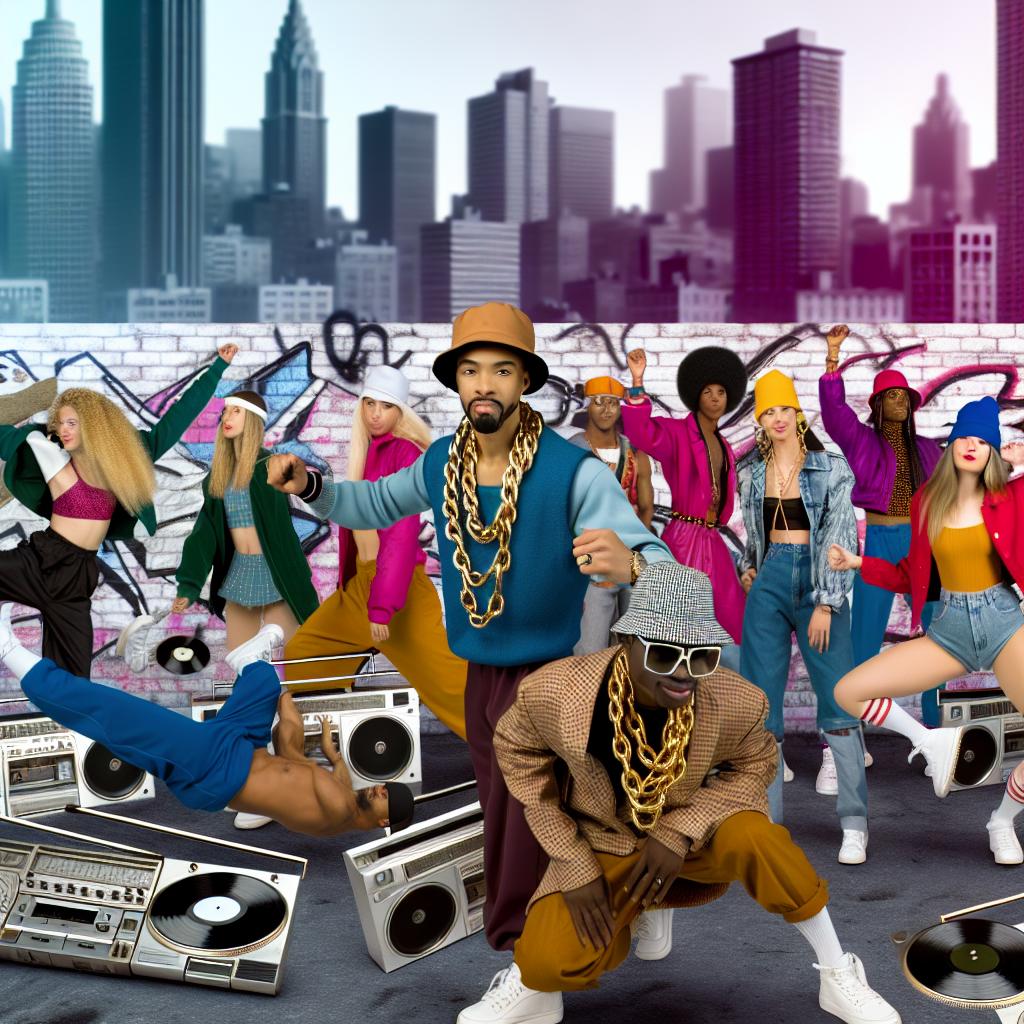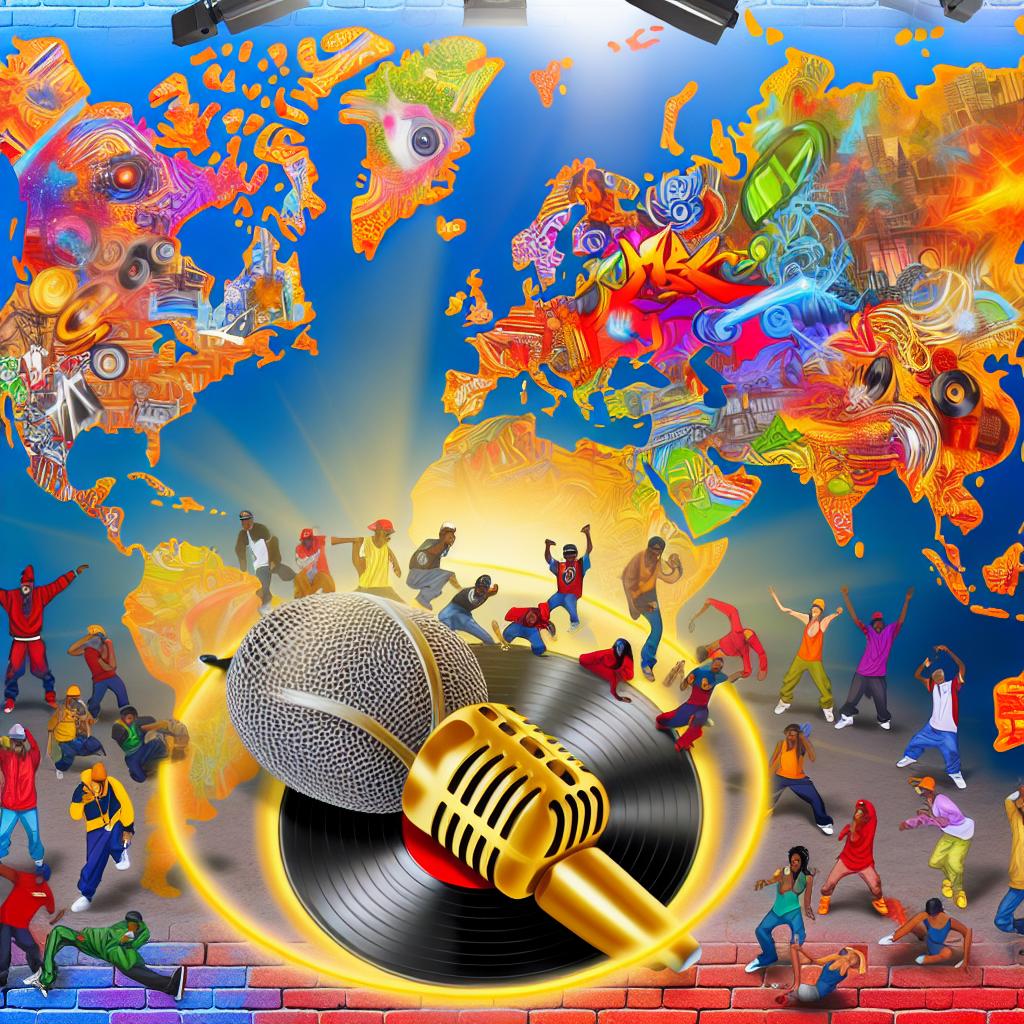The Emergence of Run-D.M.C. in Hip Hop
Run-D.M.C. is often heralded as a pivotal force in the evolution of hip hop music and culture. Emerging in the early 1980s, the group consisted of Joseph “Run” Simmons, Darryl “D.M.C.” McDaniels, and Jason “Jam Master Jay” Mizell. Their innovative blend of crisp beats, assertive rhymes, and pioneering music videos brought hip hop into the mainstream. As one of the most influential acts in rap, Run-D.M.C. played a significant role in shaping the genre’s direction.
Musical Innovations
Run-D.M.C. stood out in the hip hop scene with their distinctive style characterized by sparse musical arrangements and the heavy use of rock-influenced beats. This marked a departure from the more disco-oriented tracks that preceded them. Their famous collaboration with guitarist Eddie Martinez for the track “Rock Box” was the first instance of a rap group prominently featuring electric guitar. The release of “Walk This Way” with rock band Aerosmith further cemented their genre-blending prowess, reaching new audiences and expanding the cultural reach of hip hop.
The integration of rock elements into their music was both strategic and innovative. This move not only differentiated them from their contemporaries but also attracted a wider audience that included enthusiasts of both hip hop and rock music. The collaboration with Aerosmith was particularly significant, as it bridged the gap between two seemingly disparate genres, introducing each to the other’s audience. This crossover appeal enabled hip hop to gain a stronger foothold in the mainstream music industry and set a precedent for future cross-genre collaborations.
Influence on Fashion
Beyond their musical contributions, Run-D.M.C. also had a profound impact on fashion, both within and beyond hip hop culture. Their signature style included black fedoras, leather jackets, and notably, Adidas sneakers, which they often wore without laces. This became a hallmark of their image, setting a trend that resonated on the streets and in the commercial sphere.
The group’s embrace of streetwear made high-fashion statements accessible to a younger and broader audience. Their style choices reflected the urban landscape from which they emerged, resonating with fans who saw themselves in Run-D.M.C.’s music and fashion. The choice to wear unlaced Adidas sneakers, for instance, was not just a fashion statement but a nod to the urban lifestyle, symbolizing a blend of comfort and coolness that became synonymous with hip hop culture.
Run-D.M.C.’s track “My Adidas” not only celebrated their footwear choice but also led to an unprecedented endorsement deal with Adidas. This collaboration was one of the first of its kind, paving the way for future partnerships between hip hop artists and major fashion brands. The group’s fashion sense was instrumental in promoting hip hop aesthetics to a broader audience, embedding street style into popular culture.
The endorsement with Adidas marked a pivotal moment in the relationship between music and commerce, highlighting the influence of musicians on consumer trends. This partnership underscored the commercial potential of hip hop culture, encouraging brands to engage with musical artists as credible ambassadors who could affect buying behavior and drive brand popularity. In many ways, this was just the beginning of a trend that has since become commonplace in the music industry.
Cultural Impact and Legacy
The cultural impact of Run-D.M.C. is significant in that they broke ground for rap music and hip hop culture to be accepted by the mainstream. Their crossover success demonstrated the commercial viability of hip hop, influencing subsequent generations of artists. Through music and fashion, Run-D.M.C. helped redefine what it meant to be a rap artist and influenced broader social perceptions of the genre.
Their influence extended beyond just music and fashion. Run-D.M.C. played an essential role in articulating the narratives of urban life. Through their lyrics and public persona, they provided a voice to those whose stories were often overlooked by mainstream media. Their success showed that hip hop could be both a form of entertainment and a medium for social commentary. This dual capacity of hip hop as both art and activism is a hallmark of the genre today.
Today, Run-D.M.C.’s legacy continues to inspire artists and fashion designers alike, as seen in current collaborations between musicians and fashion entities. The group’s work remains a cornerstone of hip hop history, highlighting their lasting influence and contribution to music and culture. For more detailed explorations of their impact, you can visit dedicated music history websites or academic analyses on hip hop culture.
Pioneers of New Traditions
Run-D.M.C. were not just musicians; they were pioneers who forged new paths in a burgeoning cultural landscape. By blending elements of rock, they challenged conventional notions of what hip hop could be. Their collaborations demonstrated the potential of music to transcend boundaries and create new traditions within the genre. In many ways, Run-D.M.C.’s approach was a testament to the creative ethos that defines hip hop: a readiness to innovate, adapt, and pave the way for future artists.
Continued Relevance
In the years following their initial success, the influence of Run-D.M.C. has remained palpable. The innovations they introduced in merging musical styles continue to resonate with artists who seek to blend genres and appeal to diverse audiences. Fashion brands are more intertwined with the music industry than ever, with artists frequently setting trends that ripple across global markets.
Moreover, the broadening of hip hop’s appeal that Run-D.M.C. helped to initiate led to a rich and diverse spectrum of artists who followed, each contributing to the genre’s evolution in unique ways. The genre’s expansion, partly attributed to Run-D.M.C.’s breakthroughs, has enabled hip hop to become one of the most influential musical and cultural forces worldwide.
Educational Legacy
Run-D.M.C.’s story is often included in educational curriculums focused on music, culture, and history, illustrating how their work facilitated broader acceptance of hip hop as a legitimate and influential cultural movement. Academic courses often analyze their impact to understand the connections between music, societal change, and identity formation among youth cultures globally.
In conclusion, Run-D.M.C.’s legacy is multi-faceted, encapsulating breakthroughs in music, fashion, commercial partnerships, cultural dialogue, and education. Their contributions continue to be celebrated and studied, underscoring their role as true architects of hip hop’s enduring appeal and evolution.




